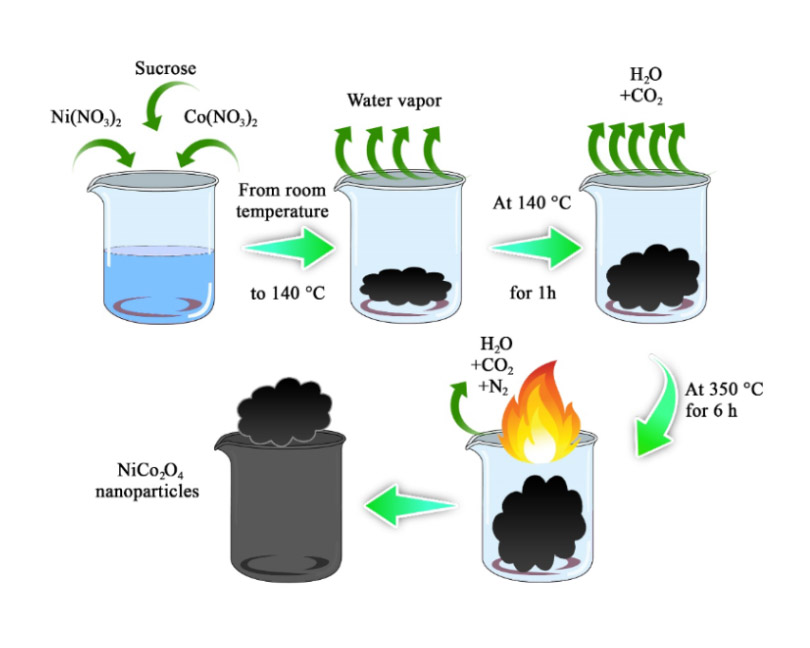A review of synthesis strategies for nickel cobaltite-based composites in supercapacitor applications
- 1 Department of Metallurgy and Materials Engineering, Iran University of Science and Technology (IUST), Narmak, Tehran, Iran
Abstract
Supercapacitors (SCs), known for their exceptional power and reasonably high energy densities, long lifespan, and lower production costs, have emerged as an ideal solution to meet the growing demand for various energy storage applications. The characteristics of supercapacitors are greatly influenced utilizing the choice of electrode materials, developing novel electrode materials a focal point for extensive research in the field of high-performance supercapacitors. In recent years, NiCo2O4 has garnered increasing attention as a supercapacitor electrode material owing to its notable edges, including high theoretical capacity, low cost, abundant availability, and ease of synthesizing. However, the performance of NiCo2O4 is hindered by its low electrical conductivity and limited surface area, leading to significant capacity deterioration. Therefore, it is imperative to systematically and comprehensively summarize the advancements in comprehending and adjusting NiCo2O4-based electrodes from multiple perspectives. The present review primarily focuses on the synthetic approaches employed to produce NiCo2O4 nanomaterials with diverse morphologies for their application in supercapacitors. This review article provides a comprehensive overview of the synthesis approaches utilized for developing nickel cobaltite-based composites tailored for supercapacitor applications. Various synthesis methods, including sol-gel, hydrothermal, and co-precipitation techniques, are discussed in detail, emphasizing the importance of optimizing synthesis parameters to enhance the electrochemical performance of the composites. The potential applications of nickel cobaltite-based composites in supercapacitors are explored, highlighting their promising prospects in energy storage technologies. Future research directions in this field are also discussed.
Downloads
References

Copyright (c) 2024 Yalda Tarpoudi Baheri, Amir Mahdi Homayounfard

This work is licensed under a Creative Commons Attribution 4.0 International License.
Copyright
Authors are the copyright holders of their published papers in Synthesis and Sintering, which are simultaneously licensed under a Creative Commons Attribution 4.0 International License. The full details of the license are available at https://creativecommons.org/licenses/by/4.0/.
All papers published open access will be immediately and permanently free for everyone to read, download, copy, distribute, print, search, link to the full-text of papers, crawl them for indexing, pass them as data to software, or use them for any other lawful purpose without any registration obstacles or subscription fees.












